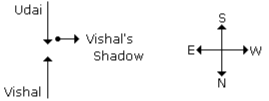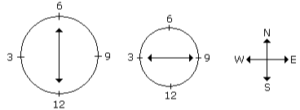It’s common knowledge that there are four cardinal points in the world: east, west, north, and south. In addition, we have a solid understanding of the four cardinal directions, which are as follows: south east, south west, north east, and north west. In order to fix the problem, we have to reason about directions. We are going to use all eight of these directions.
We are operating under the assumption that the direction to our front is north and the direction to our back is south. The direction West is to our left, and the direction East is to our right. In addition, we are aware that the sun moves across the sky from east to west each day. When a person is facing the sun, the direction that is in front of them is East, and the one that is behind them is West. To his or her right will be South, and to the left of him or her will be North.
Assumptions related to direct reasoning
The primary direction change involves a complete about-face in the previous direction. For example, when going from east to north or south, there is a change of 90 degrees. The shift is a relatively minor 45 degrees in the cardinal direction. For instance, there is a change of 45 degrees while going from north to north-east or from north to north-west. When making a right turn, you must always turn in a clockwise direction. When making a left turn, you should always turn in the opposite direction of the clock. By applying the idea of Pythagoras’ theorem, one can resolve the issue concerning the distance that has been traveled or the shortest distance that exists between two places in direction reasoning. All of these lengths are measured in a straight line between two points that have been designated.
Facts on reasoning
If a person is standing with their back to the east when the sun rises, their shadow will be cast towards the direction of the west.
At the time of sunrise, a person whose back is to the north will cast their shadow to the west, or to their left, depending on which direction they are facing.
At the moment of sunrise, a person whose back is to the south will see their shadow move to their right if they are looking south (i.e., towards West).
At the time of sunset, a person whose back is to the north will see their shadow to their right. This is because the sun sets toward the west.
Since the sun’s rays are pointing directly downward at noon, there is no possibility of a shadow being cast at that time.
Distance and direction in reasoning
When it comes to the subject of Direction and Distance, there are a lot of different kinds of questions that may be asked. These are inquiries that, in general, concerning the location, as well as the direction and distance, between two or more individuals, items, components, etc. As a result, there is a wide variety of potential inquiries that can be formulated based on the position of any individual, thing, or item. In this section, we are going to talk about the mechanics behind the ideas of direction and distance. Let us comprehend it with the assistance of the following essential guidelines:
North (N), South (S), East (E), and West (W) are the four cardinal directions, while the four ordinal directions (sometimes called the intercardinal direction) are North-East (NE), North-West (NW), South-East (SE), and South-West (SW) (SW).
Conclusion
Pythagoras’ Theory of Direction is based on the idea that there are four cardinal points in the world: east, west, north, and south. When a person is facing the sun, the direction that is in front of them is East, and the one that is behind them is North. The concepts of Direction and Distance are mechanics behind the ideas of position and distance. These are questions that concern the location, as well as the direction and distance, between two or more individuals, items, or components. The four cardinal directions are North, South, East, and West.
 Profile
Profile Settings
Settings Refer your friends
Refer your friends Sign out
Sign out










